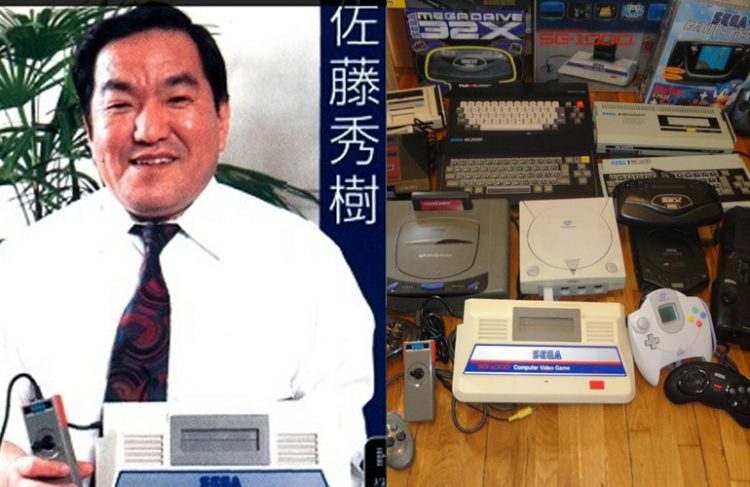 SEGA’s Hideki Sato is a big figure in SEGA history, he was the mastermind behind all of SEGA’s major console hardware including the SG-1000, SEGA Master System, SEGA Mega Drive/Genesis, SEGA Saturn and SEGA Dreamcast.He later served as SEGA President from 2001-2003. Earlier this month he was part of an ‘oral history research project’ that is documenting the game industry in Japan. The transcript is over 150 pages long and all in Japanese. I can’t read Japanese, can you?
SEGA’s Hideki Sato is a big figure in SEGA history, he was the mastermind behind all of SEGA’s major console hardware including the SG-1000, SEGA Master System, SEGA Mega Drive/Genesis, SEGA Saturn and SEGA Dreamcast.He later served as SEGA President from 2001-2003. Earlier this month he was part of an ‘oral history research project’ that is documenting the game industry in Japan. The transcript is over 150 pages long and all in Japanese. I can’t read Japanese, can you?
Well it seems that Gryson on the SEGA-16 boards knows some Japanese and he translated some of his favorite tid-bits, I’ll include the one about how he changed the SEGA Saturn to respond to PlayStation and of course the story about how PlayStation CEO
Hideki Sato on changing the SEGA Saturn design to respond to PlayStation:
The Saturn actually had just one CPU at the beginning. Then Sony appeared with its polygon-based PlayStation. When I was first designing the Saturn architecture, I was focused on sprite graphics, which had been the primary graphics up to that point.
So I decided to go with polygons (due to the PlayStation). However, there weren’t any people at Sega who knew how to develop such software. Of course, we had Yu Suzuki in the arcade department, but I couldn’t just drag him off to the console department. He was developing titles like Virtua Fighter and Virtua Racing. The expertise of all of the developers we had was in sprite graphics, so there seemed no choice but to go with sprites. Nevertheless, I knew we needed polygons. Using various tricks, adding a geometry engine and so on, I changed everything. In the end, just like the PlayStation, we had pseudo-polygons built on a sprite base. I felt no choice but to design a sprite-based architecture. Having said that, after some significant progress, pseudo-polygons did represent a “jump” in graphics in a certain way. There was a distinction of sorts. The processor was very powerful and could support 4,000, even 5,000 sprites, and I thought we could make the graphics work using a sprite engine after adding the Yamaha and such.
It seemed like we were finally nearing completion. Then, the final PlayStation was revealed. It supported 300,000 polygons. Well, that was ultimately a bunch of lies, but… When you compared the Saturn with the PlayStation, we were completely missing something. The response that I chose was to add another SH processor, so we ended up with two SH-2s. By chance, the SH supported two-way cascaded data transfer. You could add a second processor and connect them in a cascade and get multi-CPU performance. When you get to about the PlayStation 3, multi-processors had become common, but the Saturn was the first home console to use multi-processors. So I added a second SH-2, but I felt that the ‘impact’ was still weak. Well, the SH-2 is a 32-bit processor, and we had two of them, so we could call the Saturn a 64-bit machine. It’s a dirty way of getting to 64-bits. But we revealed the CD-ROM-based Saturn using 64-bits as our sales point.
Sony CEO Ken Kutaragi inviting SEGA to become 3rd party after Saturn bombs:
Ad:“To launch a new console, you really need 50-60 billion yen at the least. You have to sell those first million units. If your costs are 30,000 yen per unit, then that comes to 30 billion yen for 1 million units. And you have to design the hardware and create the electronics, make the molds and do the tooling, and this will soon use about 10 billion yen. And then you have to create the games and do advertising. You need about 500-600 people. Without all this, you can’t launch a home console. You can’t do it little by little. You really have to go all in.
Sony had annual sales of 3 trillion yen. They made their own CD-ROM drives. They had their own semiconductor factories. Once when I was talking with Ken Kutaragi [the creator of the PlayStation], he said “Hideki-chan”—he refers to me using the “chan” diminutive—“Hideki-chan, there’s no way you can beat me. Where are you buying your processors? From Hitachi. From Yamaha. What about your CD-ROM drives? You’re buying everything. By buying from Hitachi, Hitachi is profiting. You can’t make anything yourselves. We can make everything ourselves, including custom parts. We have our own factories.” Near Nakashinden, they had a huge factory where they made audio equipment that they were using for the PlayStation. Their cost structure was completely different.
“That’s the way it is, Hideki-chan,” Kutaragi told me. “So quit the hardware business. Why not just do software? We’ll give you favorable treatment.” He wanted us to go third party. We had been going for so long in the hardware business, for better or worse, and to go third party now? We had been half-heartedly successful in America once, and this made it impossible to quit the hardware business. Maybe if the Mega Drive, the Genesis, had been a failure, things would have been different. But we had a strange taste of success.
At that time, Sega’s brand image was incredible. When you powered on a Sega console, ‘SEGA’ would always appear first. Even if it was a third party game from Namco (or anybody else), Sega’s name always appeared first, followed by Namco’s. So anybody that had a Sega console, it didn’t matter what game they played, they would see Sega’s name. This helped plant the Sega brand in peoples’ minds. This was incredibly effective. To go from that to a Sony third party… Well, we had already started so it was too late.
I would have a polite dinner with Kutaragi about once every three months. He’d tell me that because we released a console last time, they would be the ones to do so this time. We are the same age, although he’s two or three months older. I would call him the polite “Kutaragi-san,” although sometimes I’d call him “Ken-chan.” Because I was two or three months younger, he’d say “Hideki-chan, please give up!”
So we released the Saturn, and in the end, it came down to software. It’s obvious, but what do consumers look forward to? They want fun games. And that’s where we failed.”

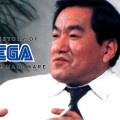
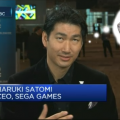
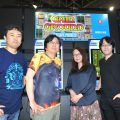
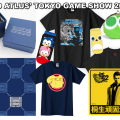
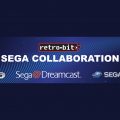
So interesting. I’d love to hear his perspective on the market when they were dreaming up the Dreamcast. What was their strategic outlook?
I disagree with the no fun games on Saturn. Saturn was a better system in my opinion and had better games. The reason PlayStation bested the Saturn was because it was easy to program for.
That’s classic corporate Japanese self-effacement… but kind of cheeky, because Sato didn’t design any of those games, so he’s kind of putting the blame on everyone else, haha. It’s not like Sony were the ones making the great PlayStation games anyway. Maybe Gran Turismo, but FFVII, Metal Gear Solid, Tekken, PaRappa, Resident Evil, Crash Bandicoot, Tomb Raider, Tony Hawk, and basically everything else were third-parties attracted by the luxuries afforded by Sony’s HUGE money.
This greatly disappoints me greatly somewhat, this means that Sony was always technically a more hardware company than Sega ever was, I remember Sega guns talking about this with the 1up site a few years ago, they said they believed they only lost because they were forced into a price war with Sony over the manufacturing of Dreamcast parts – this is why the Dreamcast didn’t last as long as it should really have, even if it sold far fewer units to support the Dreamcast software library than it actually did in reality (which is now console manufacturers make the money back from hardware production costs) it means Sony technically was right, Sega was better suited to software because they did not produce their own parts – I really wish they did though, as Sega hardware really did have a forward thinking quality to it that others didn’t.
The Sega vs. Sony competition ties directly into the problems inherent to under-regulated markets. Although the original PlayStation has one of my favorite libraries of games ever, I have no problem pointing out that its introduction onto the scene would set the gears in motion to turn big-budget gaming into the shareholder-oriented media-set-top-box snorefest that it is today. Although I never liked Nintendo as much, their survival has been nothing short of miraculous. Sega was never designed to compete with a vertically-integrated economic super-power, nor should they have been expected to. And although the Sony model attracted more third-parties, it was short-sighted for the progression of the field. Once Microsoft jumped in, that was all she wrote and outside of Nintendo, the industry has utterly stagnated.
People go on and on about the 32X and Saturn, but really the shift in gaming that forced them out was about vertical-integration and oligarchs coming in to profit on an industry Sega, Nintendo, Atari, and a few others built on their own backs. This happens in every industry. Where are Fleischer, EC Comics, and all of the black musicians who invented rock ‘n’ roll in the pages of history now?
Ken Kutaragi spoke the truth to Hideki Sato, but that doens’t make the state of affairs right.
After many years of falling back in line, they are finally giving in the talk of third partying with Sony. I’m just hoping they won’t discontinue Sega. Throughout the years of their competition they always flunked the market with indigested game-consoles that was so unpleasing. I hope with their software creations would be better ideal than their games. All through they’ve been focusing on Sonic The Hedgehog. I hope they take away that mascot and focus. They surely do what Nintendon’t.
Couple of problems with that, about the time Shenmue was a Sega Saturn project.
With Sega and Nintendo and Sony, here’s what happened. Retracing it a bit further back, in July of 1988, Nintendo started development of the Super Famicom, codenamed Famicom 2. Nintendo at the time had taken heavy interest in acquiring a smaller and cheaper off the shelf design of Apple’s 1986 16-bit Home Computer – the Apple IIGS, so they contracted Japanese semiconductor Ricoh Silicon Technologies and Sony to come up with a special System on a Chip design of IIGS hardware. Ricoh designed and customized a Single Core 16-bit processor called the A522 which powers the entire architecture of the IIGS hardware on a single processor, Sony in turn was assigned 2nd Party OEM rights to its Motherboard and designed a special Wav. Custom made Sound processor for the Famicom 2 (designed to outshine the *Brand NEW and cutting edge SEGA Mega Drive console which launched in Japan that Holiday season).
In June of 1990, several months before Super Famicom’s Japanese rollout, Nintendo heard rumours and reports that SEGA was partnering up with Pioneer and JVC to design a CD add on accessory for the Mega Drive (Mega CD aka “Sega Project Earth” was kept top secret by Sega until public unveiling in April 1991), so naturally you’d want in on the rumored Compact Disc ROM craze that other companies saw starting with NEC, and projected to have a CD add on in preparation for Super Famicom by 1992, since Sony and Philips developed CD tech together in 1981-1982, and since CD ROM was code developed by Sony, JVC and Philips in 1984-1985, Nintendo figured that it would be much easier to simply approach Sony and ask to help assist in developing the accessory.
Here’s where things fell apart. Sony in 1990, decided that since they had grown into a Large Corporation (they had purchased Columbia Pictures,Tri Star and CBS Music/Epic BMG from Coca Cola in 1988) that instead of working and partnering with others they could pretty much do whatever they wanted. Sony’s new Attitude was “We want to Monopolize any market we choose” so by that time, Sony was eyeing the video gaming business and instead of wasting time and R&D on building and developing a new home console, they could (as some saw it) screw over Nintendo with the newly codenamed
“Project Nintendo Play Station”.
What Sony did was they drew up the contract. Adding multiple Clauses in it which gave Sony 80% of control of the add on. On licensing, manufacturing, royalties and profits, while Nintendo would be left with a measly 20%. Sony was telling Nintendo in early 1991, that they were effectively the main beneficiary of the add on, it was as if they wanted Nintendo to literally give away the hardware.
Nintendo was furious, and demanded a renegotiation set for the Early Summer of 1991, but by then, Sony had another demand intentionally designed to piss off, in June 1991, Ken Kutaragi and Hiroshi Yamauchi held a Private Meeting in Kyoto, Kutaragi not only refused to change the demands in the contract, he then boldly flat out proclaimed that Sony should also have the right to design and publish Nintendo flagship IP – Mario and Zelda titles, they were telling Nintendo that they were going to handle development of Nintendo’s IPs.
It was the final straw, Yamauchi of Nintendo dismissed Kutaragi and later called and said that current deal was off pending re-negotiation. Nintendo tore up Sony’s contract and sent him a Nintendo made contract, giving Nintendo 90% of the rights, with even a JTO Trademark of the prototype “Nintendo Super Famicom CD” and relegated Sony solely to 2nd Party partner excluding the previous contract clause enabling the ability to license Nintendo IPs for the hardware.
Kutaragi of Sony pretty much discarded the contract, but not before altering it, giving Sony some rights to use the designs and concepts by redrawing them. Nintendo missed this hidden clause snuck in and signed the contract, but not before realizing that the deal with Sony and Nintendo was pretty much dead for now.
Nintendo dropped Sony from all 2nd Party duties in November of 1991, the newer batches of Super NES and Super Famicom Motherboards would no longer be handled by Sony, instead Nintendo contracted RICOH to handle ALL motherboards and Sharp as Secondary. The biggest Mistake Nintendo made was they forgot to legally buy back the designs and concepts and so Sony ran off with them. All Nintendo had to do was sue Sony for Patent Infringement and Sony’s dreams for what the PlayStation became would have been as dead as a doornail.
Sony then in August 1991, set up a meeting with SEGA Enterprises in Haneda, disguised as an OEM partner, Kutaragi and Sony were in corporate espionage to gain the hardware designs, blueprints and concepts of whatever they could find was to be the successor of the Mega Drive/Genesis that was being planned so they could outdo SEGA in everything technically.
The meeting between Sony and SEGA of Japan took place in Early September 1991. It lasted barely 45 minutes before Hayao Nakayama and the SEGA Chairboard had Sony, Kutaragi and his Chairboard leave the office. Warning them they have no qualms about competing.
SEGA was pissed off then because Sony had claimed to them they could design a cutting edge chipset for SEGA without actually showing or displaying any proof of validity of such a claim, no concepts, nothing. Sony just had unsubstantiated claims there and on top of that had asked to have access to SEGA’s Arcade tech, specs and motherboards. The only one SEGA showed Sony was System 32 Arcade Hardware.
SEGA of Japan saw right through Sony. They didn’t trust them, wanted nothing to do with them and refused to do any business with them, they had given JVC full 2nd Party rights to Mega CD. To Sony’s complete shock, SEGA were smarter than they thought.
* https://m.youtube.com/watch?time_continue=85&v=CKj_4ArfcYg
Con’t ~ Sony finally found an opening in the Spring of 1992, when they discovered that SEGA of America functioned differently from SOJ and were more naive due to their less regulated arm of the firm. So they weasled their way into SOA’s offices. They concocted an alibi that they had a 2nd party negotiations with SOJ going on wanted to handle 2nd party duties for Sega CD in America. They then told SOA that they could design and assemble a 3D chipset for SEGA’s Project Jupiter, in which SOA blindly let Sony have access to specs,designs,concepts etc, SOA had no idea that they would be doublecrossed.
Sony had effectively deceived SOA by asking to design hardware for Jupiter with a simple (weak and poorly written) contract with a hidden and sleazy clause: Sony would assist SOA in designing a Jupiter prototype chipset, so as long as they be allowed to develop Sega CD software and handle Sega CD’s 2nd Party rights. If they suddenly discontinued it, the hardware would be Sony’s.
All SOA had to do to stop this, was consult with SOJ (who would have put licensing and Patent protection on the hardware to prevent Sony from retaining it) but they never did. Sony assured SOA that negotiations of the Jupiter chipset would take place during early 1993 (biding time that Sony could use to lock down the hardware and collect the licensing rights to it).
So when Early 1993 rolled around and SOJ consulted with SOA’s engineering team after sending them a prototype of System 32 based Giga Drive/MARS, SOA told them all about Sony. SEGA was furious and when JVC found out that Sony was manufacturing Sega CD illegally, they took Sony to court and won. So all CD Loading Tray Model 1 Sega CD’s were immediately pulled from the Market in the Summer of 1993.
SOA found out the hard way that Sony had bamboozled them. Sony never met with them in the Spring of 1993. Instead, Sony started full fledged development of their CD based project “Sony PlayStation- X”.
SEGA of Japan always suspected that Sony planned something. So in Early 1993, they assigned Hideki Sato to begin work on the top secret 64-bit architectural project codenamed “Aurora”. Aurora was going to be Model 2 Arcade based. Its pretty easy to guess what eventually became of Aurora.
That’s why what eventually became the N64 was originally Sega’s, while the PlayStation started out as Nintendo’s.
Sega was first in Europe and had been there earlier and in Japan, but Nintendo got to America first and capitalised on the void caused when Atari crashed the industry in 1983, so by the time Sega came to America, Nintendo was already established with a foothold in the industry, this is why to Americans, Sega just seemingly came out of nowhere and didn’t have an earlier start anywhere when they really did ~ https://m.youtube.com/watch?t=28s&v=GwcpqZ1lYG0